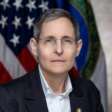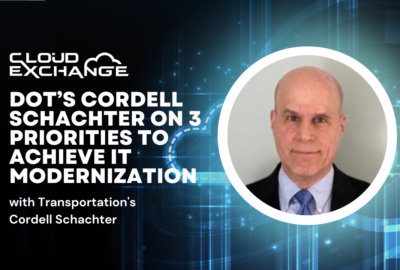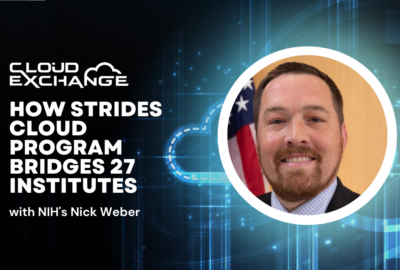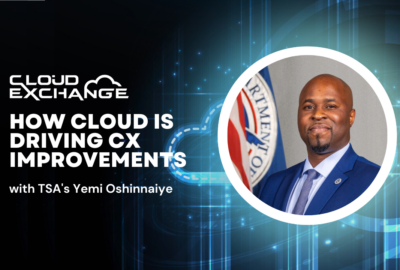Cloud Exchange 2023: Energy CIO Ann Dunkin on taking advantage of ‘scale,’ security of cloud
The Energy Department has a vast mission space from nuclear security sites to open academic research. Energy Chief Information Officer Ann Dunkin says her...
The Energy Department continues to work with its components and private sector labs on a range of different cloud initiatives, with Energy’s chief information officer largely focused on “security” and “scalability” today.
And Energy is also plotting out a major program to replace its legacy human resources IT system with a modern, cloud-based system.
Energy has sought to ensure its components have access to the major cloud instances, including Amazon Web Services, Microsoft Azure and Google Cloud, CIO Ann Dunkin said on Federal News Network’s Cloud Exchange 2023.
“A lot of our work right now around the cloud is more about security, and making sure that people are using the cloud in a secure manner, and about scalability so that we can lower our costs by providing higher scale instances,” Dunkin said.
Energy’s high performance computing sites, for example, use a mix of on-premises computing and cloud services, depending on the scale of the task in question.
“There are sites where high performance computing is, in fact, done as a hybrid, with a high performance computer on the campus and then bursting out in the cloud for some bigger jobs,” Dunkin said.
And the Energy Information Administration is also looking to use more cloud services, she said, as the statistical agency wants the ability to quickly scale with its data.
“Their data is used occasionally in big bursts, so when new data is put out there, then lots of people want to look at that, and then there’s not a lot of use after that,” Dunkin said. “So it’s a great example of where we can create burst capacity in the cloud.”
One of Energy’s first major cloud projects was the move to Enterprise Cloud Email jumpstarted by a Technology Modernization Fund investment in 2018. The project transitioned more than two dozen on-premises email environments to cloud email.
Dunkin said Energy is looking at further consolidation of its cloud email instances, while also looking to use more collaboration tools across the department’s enterprise. One example she pointed to is Energy’s relatively new cloud-based intranet, called “Energy Hub.”
“There’s a lot of urgency on our part to get everybody in there and sharing so that they can fully utilize the tools we’re making available to our employees,” Dunkin said.
Energy eyeing HR system of the future
Energy’s human capital office is also sketching out a major modernization effort to bring the department’s HR system into the cloud. The department previewed the project in a January request for information, describing out how Energy’s core HR system hasn’t had a major update in 20 years and “is not meeting current business needs.”
“There are too many system interconnections; the system is dated in appearance; it does not support a virtual workforce; and it is difficult to maintain operations without lengthy ‘freeze’ periods that ultimately cost taxpayers and erode service levels to DoE employees,” the notice states.
Dunkin said her office is supporting the modernization office. The human capital team is “in the early stages of identifying their proposed way to proceed on this project,” she said.
“Right now, they’re looking at the options as to how to proceed, and frankly, how to fund the project,” Dunkin added.
But she said the key to the extensive modernization effort will be buying a system that allows Energy to be “nimble” and connect new capabilities via application programming interfaces (API’s) as new technologies become available.
“But it’s a very lightweight activity, to go ahead and connect those API’s,” Dunkin said. “You’re not building extensive integrations, you’re not tying those systems together in ways that makes it hard for them to upgrade in the future. So that’s the key consideration. We select a product that’s going to meet our employees’ needs, that’s going to be available off the shelf, that we can configure and not get engaged in any sort of customization or building modules or things like that. And that we can then integrate that with other best of breed capabilities.”
Energy cybersecurity strategy coming into focus
Dunkin also provided an update on Energy’s forthcoming cybersecurity strategy.
“Cloud is going to be a huge part of our cyber strategy,” she said. “It is modeled after the national cyber strategy, which the folks who are working on my cybersecurity strategy actually worked on the national cybersecurity strategy. They wrote some of the foundational papers that built into that strategy.”
In addition to providing Energy components with a sense of direction in the cybersecurity space, Dunkin said the strategy will be a “living document” that drives the department’s annual planning processes.
“Our goal really is to make sure that drives implementation planning, and that it gets refreshed as needed to continue to drive implementation planning,” she said.
The department is particularly focused on protecting its “high value assets” and encrypting data, which aligns with the federal “zero trust” security push as well, Dunkin explained.
But Energy’s systems cross the gamut from operational technologies to traditional IT, meaning the department will have to consider a range of security controls and solutions depending on the environment.
“We have everything from nuclear security sites, to Berkeley that does open science, to the power grid,” Dunkin said. “So each of those have different requirements to be secured.”
And while the cybersecurity strategy is a major focus for Dunkin’s office now, she pointed out that security is not the end game for her team.
“Our job is to enable DOE’s mission by providing technology and tools . . . you have to make sure it’s secure to deliver the mission,” she said. “But if all we do is look at security, we’re not doing our job.”
To read or watch other sessions on demand, go to our 2023 Cloud Exchange event page.
Copyright © 2025 Federal News Network. All rights reserved. This website is not intended for users located within the European Economic Area.
Follow @jdoubledayWFED
Related Stories
Cloud Exchange 2023: NIH’s Nick Weber explains how STRIDES cloud program bridges 27 institutes
Cloud Exchange 2023: TSA’s Yemi Oshinnaiye on cloud driving CX improvements
Featured Speakers
-

Ann Dunkin
Chief Information Officer, Energy Department
-

Justin Doubleday
Reporter, Federal News Network
Upcoming Events
Related Stories
Top Stories

Ann Dunkin
Chief Information Officer, Energy Department
Ann Dunkin currently serves as Chief Information Officer at the U.S. Department of Energy, where she manages the Department’s information technology (IT) portfolio and modernization; oversees the Department’s cybersecurity efforts; leads technology innovation and digital transformation; and enables collaboration across the Department. She served in the Obama Administration as CIO of the U.S. Environmental Protection Agency. Prior roles include Chief Strategy and Innovation Officer, Dell Technologies; CIO, County of Santa Clara, CA; CTO, Palo Alto Unified School District, California; and various leadership roles at Hewlett Packard focused on engineering, research and development, IT, manufacturing engineering, software quality, and operations.

Justin Doubleday
Reporter, Federal News Network
Justin Doubleday is a defense and cybersecurity reporter for Federal News Network. He previously covered the Pentagon for Inside Defense, where he reported on emerging technologies, cyber and supply chain security. Justin is a 2013 graduate of the University of New Hampshire, where he received his B.A. in English/Journalism.






